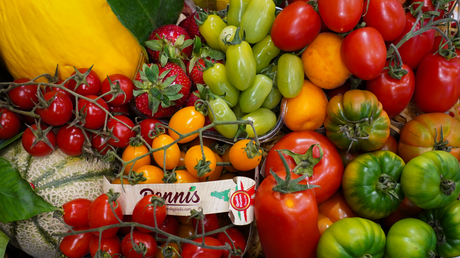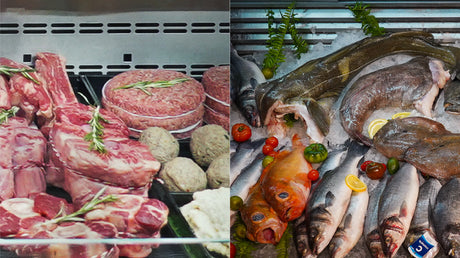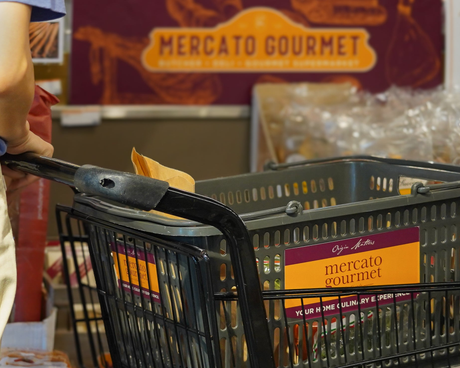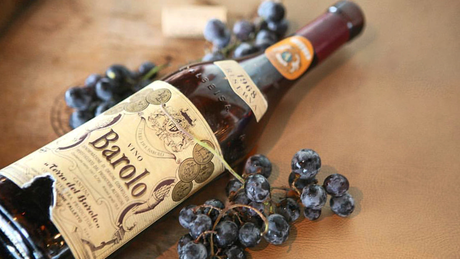Pesto Sauce Pasta, One of the Most Popular Pasta Sauces in Italy!
Originating from Liguria, "pesto" comes from the Italian word "pestare" (to crush), referring to the traditional method of grinding ingredients in a mortar and pestle.
The fresh basil forms a vibrant, aromatic base, while the rich, nutty flavours of Parmigiano and Pecorino create a creamy, fragrant sauce.
INGREDIENTS
- Orecchiette Pasta
- Pesto Sauce MANGIO*
- Stracciatella
- Cherry Tomatoes
- Fresh Basil Leaves (optional)
- Extra Virgin Olive Oil
- Pine Nuts
- Garlic
*To make your own pesto, follow our pesto recipe at the end of the instructions!
INSTRUCTIONS:
1. Cook the Pasta:
- Bring a large pot of salted water to a boil.
- Add the orecchiette and cook according to package instructions until al dente. Reserve about 1/2 cup of pasta water, then drain.
2. Prepare the Sauce:
- In a large pan, heat a drizzle of extra virgin olive oil over medium heat.
- Add the halved cherry tomatoes and sauté for 2-3 minutes until they soften, then season with salt and pepper.
3. Combine Pasta and Pesto:
- Add the drained pasta to the pan with tomatoes. Turn off the fire.
- Stir in the pesto (either homemade or store-bought), adding a bit of the reserved pasta water to create a silky sauce.
4. Stracciatella & Serving:
- Plate the pasta and top each serving with generous spoonfuls of stracciatella, and add fresh leaves on top.
BUON APPETITO!
Ready to Make Your Own Pesto Sauce? You will need:
- 50g Fresh Basil Leaves
- 1 Garlic Clove
- 1/4 cup (30g) Pine Nuts
- 1/2 cup (50g) grated Parmigiano Reggiano
- 1/4 cup (25g) grated Pecorino Romano
- 1/2 cup (120ml) Extra Virgin Olive Oil
- A pinch of coarse salt
- A pinch of pepper
INSTRUCTIONS:
1. Prepare the Basil:
- Wash the basil leaves gently under cold water and pat them dry thoroughly with a clean kitchen towel or paper towels. Excess water can affect the texture of your pesto.
2. Toast the Pine Nuts:
- For a deeper flavour, lightly toast the pine nuts in a dry skillet over medium heat for 1–2 minutes until golden and fragrant. Let them cool.
3. Layer Ingredients in the Blender:
- Add the garlic cloves, pine nuts, and a pinch of sea salt to the blender first.
- Add the basil leaves on top.
- Pour in about half of the olive oil.
4. Blend in Pulses:
- Use short pulses to start breaking down the ingredients. Stop blending as soon as the basil starts to break up. Avoid running the blender for too long to prevent heating, which can darken the basil and alter its flavour.
5. Add Cheese and Remaining Oil:
- Once the mixture is roughly chopped, add the Parmigiano Reggiano and Pecorino Romano cheeses.
-
Gradually pour in the rest of the olive oil while pulsing until the pesto reaches your desired consistency. It should be smooth but still have some texture.
6. Taste & Adjust:
-
Taste the pesto and adjust with a bit more salt if needed. If it's too thick, add a small splash of olive oil or a spoonful of the starchy pasta cooking water when you’re ready to use it.
Store leftover pesto in an airtight container, covering the surface with a thin layer of olive oil to prevent oxidation. It keeps in the fridge for up to a week or can be frozen for longer storage.








